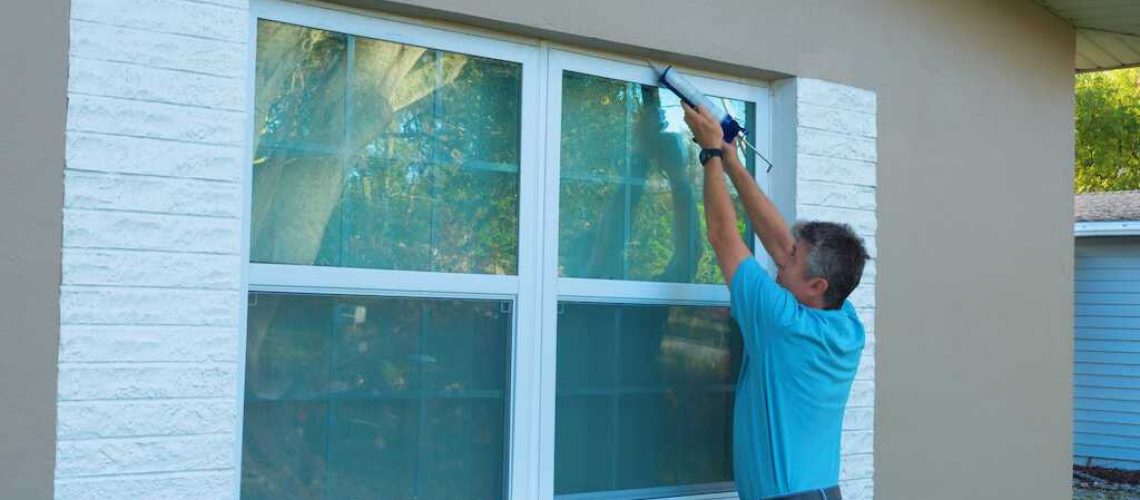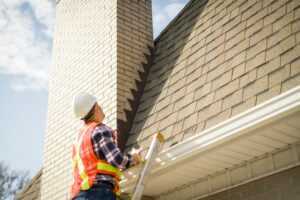Did you know that the average house loses about 10 percent of its heat through its windows? That might not sound like much at first, but it adds up fast, especially during the cold winter months when every bit of warmth counts. The good news is, you can prevent this heat loss by insulating your windows through a process called window weatherproofing.
Window weatherproofing often slips through the cracks of home improvement plans for many homeowners. After all, during the sunny days of spring and summer, everything feels just fine, and extra insulation may seem unnecessary. However, when winter rolls in and icy drafts start to sneak in through the windows, it suddenly becomes clear how vital weatherproofing really is.
What Is Window Weatherproofing?
At its core, window weatherproofing is all about creating a barrier that protects your home from the outside elements. It involves sealing cracks, gaps, and other small openings in your windows to keep cold air, rain, and moisture out. This process also insulates the windows, stopping heat from escaping during winter and preventing heat from coming in during the blistering summer months.
Window weatherproofing is more than simply stopping drafts. Even tiny gaps in windows can allow significant energy loss. By ensuring your windows are airtight, weatherproofing helps maintain the desired temperature inside your house, reducing reliance on heating or cooling systems. It’s a straightforward way to make your home more energy-efficient and save money in the long run.
How Does Window Weatherproofing Work?
Window weatherproofing might sound complicated, but at its heart, the process is straightforward. It involves inspecting windows for vulnerabilities, sealing up entry points for cold air, and applying insulation where necessary. Here are the basic steps:
1. Inspection for Gaps and Cracks
The first step is carefully inspecting windows for visible gaps, cracks, or other areas where air can flow freely. Often, these gaps are found around the edges of the window frames or where infrastructure has shifted over time.
2. Sealing with Caulk or Sealant
Once cracks are identified, they’re sealed using waterproof caulks or specialized sealants to block airflow and moisture penetration.
3. Adding Insulation
For windows with more significant gaps or thin panes, additional insulation is required. Techniques like blown-in fiberglass insulation or foam strips are particularly helpful here.
4. Replacing or Updating Window Materials
Sometimes, weatherproofing requires replacing worn-out weatherstripping or upgrading to modern, energy-efficient materials. Specialized coatings and multi-pane glass add extra strength to your windows’ defenses.
While some homeowners may attempt this themselves with DIY kits, professionally weatherproofing your windows brings better, longer-lasting results. Experts know exactly where to look for vulnerabilities and will apply solutions with precision.
Common Window Weatherproofing Techniques
When it comes to window weatherproofing, there’s no one-size-fits-all solution. Professionals use various techniques tailored to the age and condition of your windows to maximize insulation and efficiency. Here are some of the most effective methods:
1. Reflective Window Coating
Applying a reflective coating to your windows helps reduce heat transfer both ways. These coatings reflect sunlight and heat energy in summer while trapping warmth inside during the colder months. Low emissivity (low-E) coatings are a popular choice as they minimize the thermal energy passing through the glass. It’s a lightweight solution that makes a big impact on energy efficiency.
2. Double- and Triple-Glazed Windows
Double- and triple-glazed windows are a game-changer in preventing heat loss. These windows have two or three panes of glass with air or gas trapped in between. This extra layer of insulation dramatically reduces heat transfer. While they involve upfront costs, the energy savings over time often outweigh the expense.
Fun Fact:
Triple-glazed windows are most effective in climates with extreme temperatures. If you experience freezing winters or sweltering summers, they are worth the investment.
3. Blown-In Fiberglass Insulation
Fiberglass, a sturdy and lightweight insulating material, works wonders for older windows. Professionals use specialized equipment to blow fiberglass into the gaps around the window frame. This technique not only stops drafts but also reinforces the structural integrity of the window.
4. Weatherstripping
Adding weatherstripping to movable components of windows, such as sashes, creates a snug seal. Types of weatherstripping include adhesive foam, rubber gaskets, and even metal V-strips, depending on your windows’ design. These are affordable and effective products for tackling drafts.
5. Storm Windows
For an extra layer of protection, storm windows can be installed either internally or externally. These secondary windows create an air-tight barrier over your existing units, blocking out weather and noise alike.
What Are the Benefits of Window Weatherproofing?
The advantages of weatherproofing your windows extend far beyond keeping the cold out. Here’s a closer look at some of the many reasons you should consider weatherproofing:
1. Reduces Energy Bills
If it feels like your energy bills keep climbing, weatherproofing your windows is an easy decision. By insulating your windows and sealing off drafts, your home becomes more energy-efficient, which means your HVAC system won’t work as hard to keep your home comfortable. Over time, you’ll see significant savings.
2. Environmentally Friendly Option
Using less energy to heat or cool your home also reduces your carbon footprint. With climate change being a pressing issue, even small steps like weatherproofing can contribute to a more sustainable future.
3. Improves Indoor Comfort
No more icy drafts ruining cozy winter nights or humid air sneaking in during summer. Weatherproofed windows ensure your home stays comfortable year-round, regardless of the conditions outside.
4. Minimizes Noise Pollution
Sound can travel through the same cracks that allow drafts into your home. By sealing up cracks and adding insulation, noise levels from outside (such as traffic or noisy neighbors) can be significantly reduced.
5. Keeps Pests Out
Unsealed gaps in windows also serve as entry points for pests like insects and rodents. Weatherproofing blocks these unwanted visitors, creating a clean, pest-free living environment.
6. Lengthens Window Lifespan
Replacing windows is an expensive and time-consuming process. Weatherproofing protects your windows against damage caused by extreme temperatures, moisture, and UV rays, helping them last much longer.
7. Boosts Home Value
Energy-efficient homes are highly desirable to buyers. By investing in weatherproofed windows, you increase the value of your property and create a selling point should you decide to move.
How Weatherproofing Saves Your HVAC System
Your HVAC system works tirelessly to keep your home comfortable, but it can only do so much when battling against drafts and poorly insulated windows. Weatherproofing lightens the load, meaning your furnace or air conditioner doesn’t have to overwork itself. This increases the lifespan and efficiency of your HVAC system while helping you avoid costly repairs down the line.
The Investment That Pays for Itself
While professionally weatherproofing your windows may feel like a significant initial cost, the savings on energy bills and reduced wear on your HVAC system can more than make up for it. Plus, the added comfort and peace of mind you’ll enjoy are priceless.
Get Your Windows Weatherproofed Today
With so many advantages to weatherproofing your windows, there’s no reason to put it off. Protect your home, save money, and contribute to a greener planet by sealing up those drafts and insulating your windows. Don’t wait for the next cold snap to remind you why this is important.
Reach out to our trusted window service team to get an estimate today, and we’ll help you take the first step toward a more energy-efficient home.




